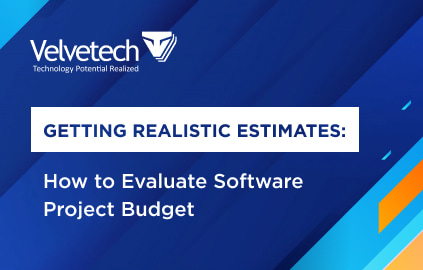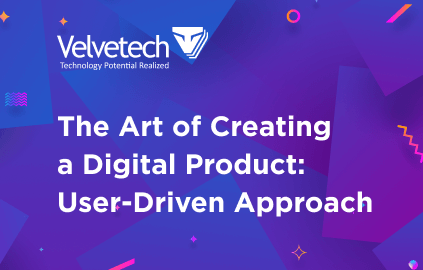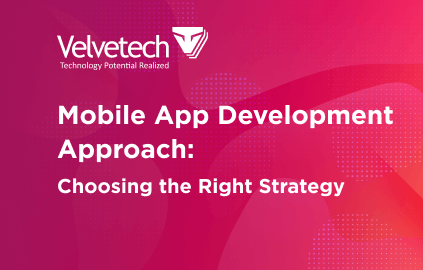Sometimes we forget how important our health is until we have a medical emergency. Something that seemed little yesterday becomes a matter of life and death.
It is not surprising then how Insider Intelligence’s healthcare report states that global healthcare spending will reach $665.4 billion by 2028. Money cannot replace good health.
Healthcare organizations, however, need to keep up with the changing times to help patients improve their health. And one successful strategy to achieve that is custom healthcare app development.
Why Is a Healthcare App Development Strategy Important?
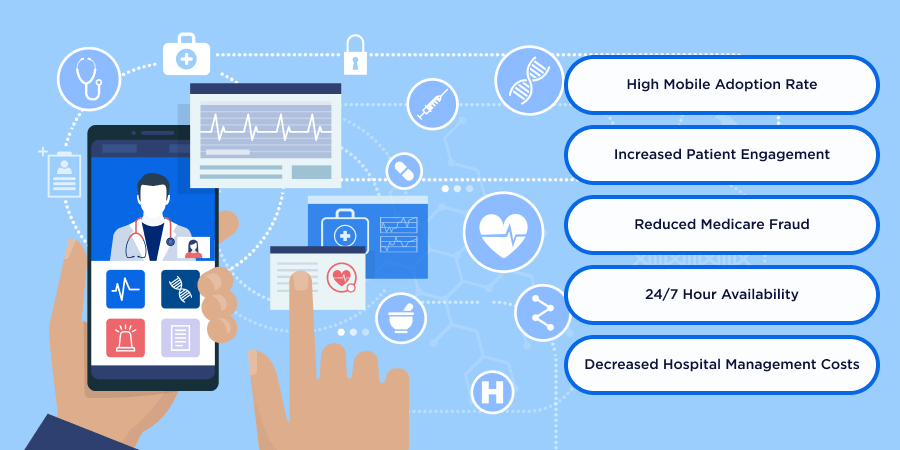
If you’re still uncertain whether health apps are a must-have for healthcare providers today, there are plenty of reasons to convince you they are. While it’s definitely hard to imagine the modern world without mobile, the medical field can’t do without it either. Below, we provide you with the five statements that show the importance of mHealth apps.
Reason 1: High Mobile Adoption Rate
Over the past 6 years, according to Statista, smartphone usage in the U.S. grew from 274 million in 2018 to over 310 million smartphones in 2024.
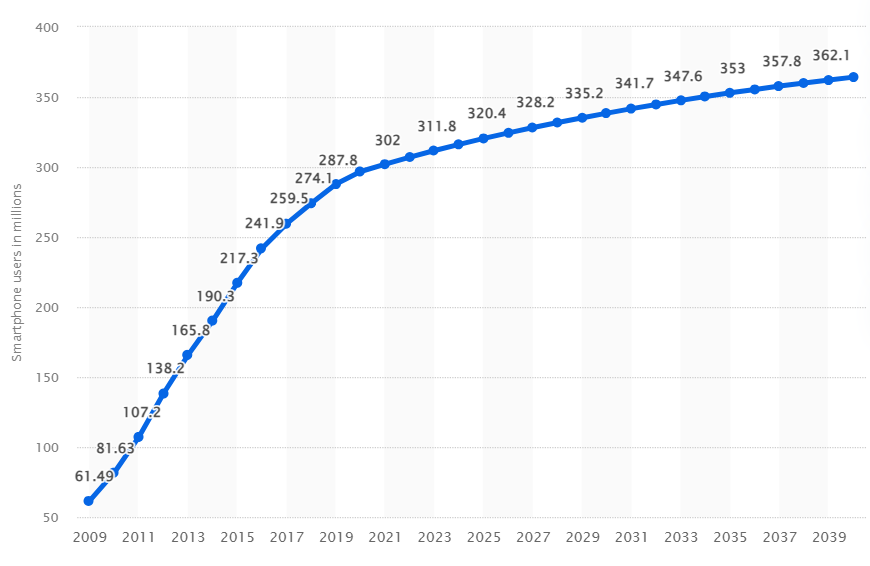
This smartphone usage growth changes consumer expectations in the medical field. As a result, healthcare organizations are prompted to come up with a development strategy that will help them address the shifting needs of patients.
Learn more about Consumerization in Healthcare
Reason 2: Increased Patient Engagement
Around 46% of US consumers engage with healthcare providers using both in-person visits and digital patient portals, telemedicine, and of course mobile apps. Thus, these health products are important for them to stay involved in the process.
The ability to work with medical professionals remotely empowers consumers to search for the best care they can find. Consequently, it drives healthcare institutions to work on offering better quality of care and enhancing patient satisfaction.
Reason 3: Reduced Medicare Fraud
Digital apps give massive amounts of data for Medicare claims. The government can easily collect and analyze these transactions for irregularities.
Every mobile healthcare application becomes a data point to find more fraudulent claims.
Reason 4: 24/7 Hour Availability
A standard healthcare mobile app provides customers with 24/7 access to their records, doctors’ messages, and other vital medical information.
It removes repetitive communication and reporting and helps streamline the medical environment.
Discover Top Considerations to Build an mHealth App
Reason 5: Reduced Hospital Management Costs
The healthcare mobility can not only improve patient outcomes but also drastically reduce hospital costs.
Hospitals save money on administration from the time savings of completing tasks remotely, faster reporting, and fewer clerical errors.
This money can then go to higher-quality medicine and lower hospital bills. The lower costs come as many consumers have been hit with higher insurance premiums.
Considerations of an mHealth App Development Strategy
Now that we’ve covered the importance of an app development strategy for the healthcare industry, let’s briefly explore the essential things to consider while supporting the digital transformation of healthcare delivery with model technology.
Following the vision of the digital strategy offered by the World Health Organization, the development and adoption of tech health solutions should support patient-centricity. What does it mean for your app? Essentially, it should possess the five important characteristics. Let’s look at them.
Accessible
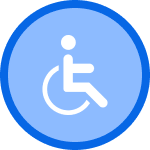
Accessibility refers to designing the app in a way that ensures it can be easily accessed and used by all users. You should keep in mind those with disabilities or limitations and remember that people might interact with healthcare apps while being in a vulnerable state.
This involves providing options for adjustable font sizes, voice command functionalities, and screen reader compatibility. Also, don’t forget about compatibility across various devices and operating systems. An accessible mHealth app ensures that healthcare services and information are available to everyone, regardless of their physical or cognitive abilities.
Affordable

This feature is quite self-explanatory. It means that you need to make sure your app is accessible to users across different socioeconomic backgrounds. Depending on your app launch strategy, it may include offering the solution for free or at a low cost.
For example, you can provide options for subsidized or discounted access for individuals with limited financial resources. Or, offer integration with existing healthcare systems or insurance plans to reduce out-of-pocket expenses for users. An affordable mHealth app ensures that cost is not a barrier to accessing care services.
Scalable

It’s important to think about the actions to take in case your services, app functionality, or use base grow. And it’s better to do it in advance. To accommodate this growth and increased demand over time without compromising performance or functionality, your app development strategy should encompass a scalability factor.
In essence, a scalable app architecture allows for seamless expansion to support a larger user base, additional features, and integration with new technologies or data sources. Talk to your team to discuss the best ways to build such architecture. It can include modular components, cloud-based infrastructure, and efficient data management.
Read more about Key Data Management Practices
Sustainable

Your app should be valid and live over time to the same extent that it was in the beginning. So, take care of it by maintaining, updating, and supporting it over the long term to continue delivering value to your users and stakeholders. Sustainable mHealth apps prioritize factors such as energy efficiency, resource optimization, and environmental responsibility to minimize their ecological footprint.
What can you do to ensure sustainability? Well, establishing clear governance structures, securing funding or revenue streams to cover ongoing operational costs, and implementing robust maintenance and support processes are all among the actions to consider.
Secure

This one is non-negotiable, of course. Mobile healthcare solutions collect and process immense amounts of sensitive data. Thus they must safeguard it, protect against unauthorized access, and ensure compliance with privacy regulations.
This can involve a variety of measures like implementing encryption protocols to secure data transmission and access controls and authentication mechanisms. Ensure that your team regularly updates and patches security vulnerabilities and conducts thorough security audits and assessments.
Eventually, a secure mHealth app instills trust and confidence in users. It will help you encourage your app’s widespread adoption and engagement while mitigating risks associated with data breaches or cyberattacks.
Key Elements for Custom Healthcare App Development Strategy
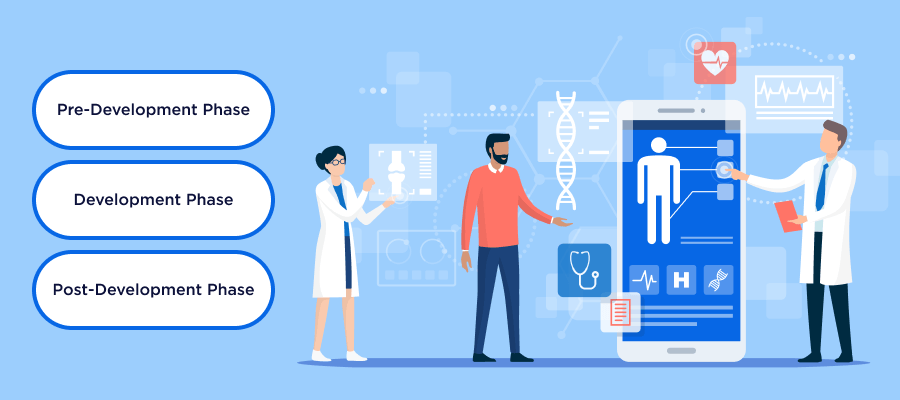
That’s not an easy deal to describe all the steps and components to keep in mind while working on the development strategy for your health application. Because there’s a lot. Nevertheless, below, we’ll talk about everything you need, in our opinion, to think about before and after you set out on this journey.
To make it more simple, we’ve broken down this part into three broad phases that you’ll certainly have on your project.
Pre-Development Phase
In terms of strategy, the pre-development phase is the most critical stage as it’s where you’re crafting your plan of action for the entire healthcare app development project. As you can probably guess, this phase involves thorough research and preparation before actual development begins. So, what do you need to do here?
1. Needs Assessment
Yes, this is a proverbial step, but you need to identify the specific healthcare challenges or gaps that the app aims to address. For that, gather insights from healthcare professionals, stakeholders, and potential end-users to understand their requirements, preferences, and pain points.
2. Market Research
Next, you want to analyze the competitive landscape and market trends to find out what’s going on out there. Consider existing solutions, competitor strengths and weaknesses, and potential opportunities for differentiation. This will help you refine the app concept, define the target audience, and position the app effectively within the market.
3. Regulatory Compliance
No way you can’t miss this part since you’re developing not just a regular consumer app but a healthcare solution. If you haven’t done it yet for some reason, take time to research and understand regulatory requirements and compliance standards applicable to your healthcare app.
They may encompass well-known HIPAA, GDPR, or FDA regulations, and more specific like FHIR or HL7. Ensuring compliance with these regulations from the outset is crucial for protecting patient data, ensuring safety, and avoiding legal issues.
Discover more about HIPAA-Compliant App Development
4. Technology Stack Selection
Here, together with your team you should think about the appropriate technology stack — programming languages, frameworks, databases, etc. It will all be based on the app’s requirements, scalability needs, security considerations, and development team expertise. Why doing it so soon? Because selecting the right technology stack lays the foundation for efficient development and future scalability.
5. Budgeting and Resource Planning
This is probaly the most anticipated part. It’s where you estimate project costs, allocate the budget, and plan staffing requirements. Your team should include such experts as Business Analysts, mobile developers, UI/UX designers, and QA specialists.
Sometimes, if your project is more complex, you may need the help of data engineers or even AI experts. Setting realistic budgets and resource allocations is vital for smooth project execution. Moreover, it prevents unexpected project delays or budget overruns.
6. Prototyping and Wireframing
Finally, you can validate your idea and visualize your app’s user interface, navigation flow, and functionality. Iteratively refining the prototypes and wireframes based on feedback from stakeholders and end-users can optimize the user experience and minimize development risks. Another way to validate your idea and make sure your app is viable is to develop an MVP product first.
Project Estimates
Watch our webinar to learn about the practical ways to evaluate your software project estimates.
Development Phase
The next part we want to overview regarding the strategy is the development phase itself. Here, pay attention to the following elements:
1. Agile Development Methodology
It’s not something you haven’t heard about, but it’s a good idea to stick to the agile development approach, such as Scrum or Kanban. It facilitates iterative development, continuous feedback, and adaptability to changing requirements. With this methodology, you can easily promote collaboration, transparency, and rapid delivery of incremental updates. Thus, enhancing the overall efficiency and quality of the development process.
2. User-Centric Design
Excellent user experience is one of the keys to making your app useful and increasing patient engagement. That’s why you need to ensure your mobile solution’s UI/UX design is user-centered and provides easy navigation, coherent visuals, and informative graphics.
You see, the user-friendly design facilitates all interactions between the app and users and creates a smooth look and feel that helps healthcare professionals, patients, and caregivers achieve better outcomes.
Learn more about UI/UX in Healthcare
User-Driven Approach
Watch our webinar and learn the top ways of reducing poor user satisfaction, low adoption rates, and decreased loyalty.
3. Backend Development
It might be the case that you’ll need to integrate your app with other systems like EHR, PMS, ERP, or any third-party APIs. Maybe, you’ll also need to support robust data storage. That’s where backend infrastructure and databases come into play. Consider implementing scalable and secure backend solutions that ensure optimal performance, data reliability, and interoperability with existing healthcare IT infrastructure.
You also have to think about strong encryption protocols and secure data transmission methods, such as SSL/TLS. This is to protect sensitive PHI stored on servers and transmitted between the app and backend systems.
4. Frontend Development
In developing frontend interfaces for mobile healthcare apps, your team should prioritize responsive design principles for seamless adaptation to various devices, platforms, and orientations. Whether you develop a native app for Android or iOS or build a cross-platform solution, you need to adhere to platform-specific design guidelines.
On top of that, pursue optimization for performance and offline capabilities as it usually enhances user experiences, minimizes loading times, and ensures uninterrupted access to critical features.
5. Quality Assurance and Testing
The last point here is conducting comprehensive testing and quality assurance activities. This is a very crucial step that can include various tests like functional, performance, security, and usability. QA essentially helps in identifying and resolving bugs, ensuring app stability, and validating compliance with regulatory standards before deployment.
Choosing a Winning App Development Strategy
Watch our webinar to uncover effective mobile development approaches and launch your app.
Post-Development Phase
So, you have the application ready to go live. What’s next?
1. Deployment and Launch
First in this part will be, of course, deploying the app to production environments and launching it on relevant app stores or distribution platforms. Unless you’re building an enterprise solution without the need to generate revenue through it, you should think about the way to monetize your health mobile app.
There are several options to do it, depending on the target users and initial goals the application has to address. In general, you can leverage one of the following ways to earn money with your health app:
- Pay-per-Download
- In-App Purchases
- Subscriptions
- In-App Advertising
- Freemium
Additionally, you need to generate awareness, acquire users, and drive the adoption of the app among target audiences. Implementing effective marketing and promotional strategies will help you achieve that.
2. User Feedback and Iteration
While the app is doing its work, you collect user feedback and performance metrics to identify areas for improvement, prioritize feature enhancements, and iterate on your app’s design and functionality. Data analytics will help you with this. There is a range of tools that can scrutinize user behavior and engagement patterns to further optimize user experience and personalize content and services.
3. Maintenance and Updates
We’re finally at the end. However, the work doesn’t stop as your solution requires ongoing maintenance and support. It happens that some software bugs, security vulnerabilities, or compatibility issues appear, so you need to address them. Regularly release updates and patches to introduce new features, improve performance, and ensure compliance with evolving regulatory requirements and healthcare standards.
Final Thoughts
We’ve highlighted a lot today, and you can see that discovering the best options for delivering your custom healthcare solution requires strategic thinking.
If you want a partner to share this responsibility, Velvetech, a custom software development company, is ready to help. We have more than 20 years of experience in delivering healthcare software solutions, and thus know the nuances of the field. Contact us for a free initial consultation today. Enter your information below to get the conversation started.
